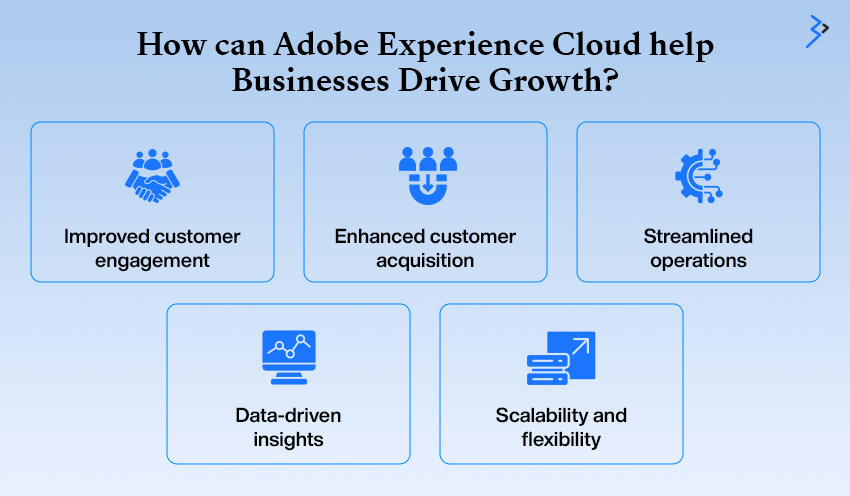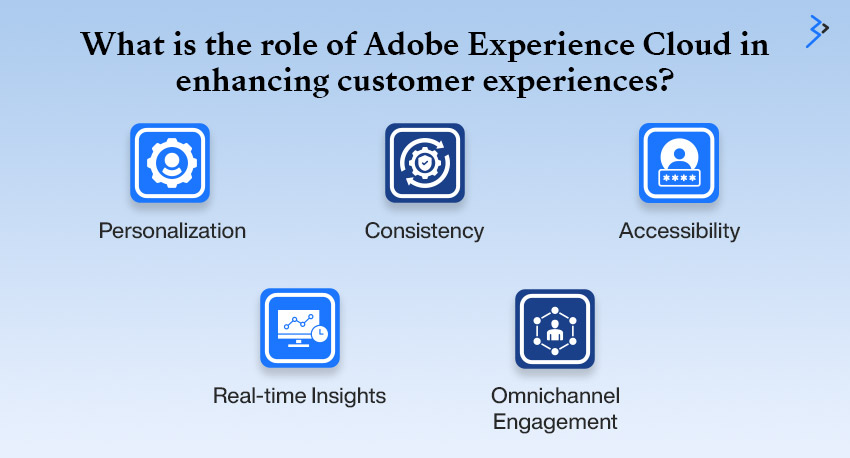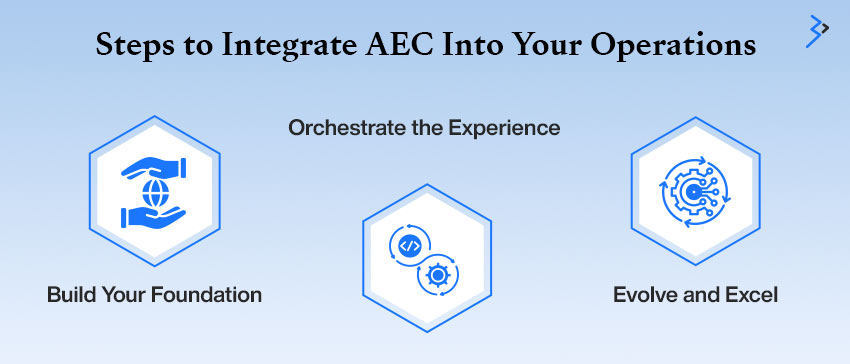As organizations handle consumer requirements and expectations, delivering excellent customer experiences remains a primary focus.
Fortunately, technological improvements have provided organizations with tools such as Adobe Experience Cloud, allowing them to provide tailored and engaging experiences on a large scale.
In this blog post, we will introduce Adobe Commerce and its solutions and explain how they may help organizations drive growth, improve customer experiences, and achieve their objectives.
What is Adobe Experience Cloud?
Adobe Experience Cloud is a set of cloud-based apps and services that enable organizations to manage and enhance customer experiences across many touchpoints, including web, mobile, email, and social media.
The platform combines several features, such as content production, marketing automation, advertising, analytics, and data management, into a cohesive solution that enables organizations to provide personalized, relevant, and consistent consumer experiences.
Businesses may use customer data, behavioral insights, and Website Feedback Tools to develop targeted content, offers, and campaigns that resonate with their consumers, increasing customer satisfaction and loyalty.
Adobe Experience Cloud and Adobe Experience Manager managed services are complete solutions that allow organizations to manage their whole digital marketing ecosystem in a single platform. This results in improved outcomes and meeting business objectives in the digital world.
How can Adobe Experience Cloud help Businesses Drive Growth?

Adobe Experience Cloud is a complete solution that may help organizations succeed in various ways. Here are some ways Adobe Experience Cloud may help organizations and promote growth. Let’s learn more about it in this section:
1. Improved customer engagement
Adobe Experience Cloud collects and analyzes consumer data to help organizations understand customers’ actions, preferences, and interests. This enables organizations to develop individualized customer experiences, increasing engagement and loyalty. Furthermore, Adobe Experience Cloud enables organizations to provide consistent experiences across several touchpoints, including online, mobile, and social media, improving the entire consumer experience.
2. Enhanced customer acquisition
Adobe Experience Cloud may assist organizations in acquiring new clients by enhancing their digital marketing strategies. Businesses may use customer data to design tailored marketing that appeals to their potential clients, resulting in higher conversion rates and ROI.

3. Streamlined operations
Adobe Experience Cloud may help organizations streamline operations by combining several products and services into a single platform. This enables firms to manage their digital marketing environment more efficiently, lowering operating costs while improving productivity.
4. Data-driven insights
Adobe Experience Cloud offers organizations real-time data and analytics into consumer behavior, campaign effectiveness, and more. This enables firms to make data-driven decisions and improve their strategy for better results.
5. Scalability and flexibility
Adobe Experience Cloud is a cloud-based system that can expand to meet the demands of enterprises of any size. Furthermore, the platform is adaptable, allowing organizations to tailor their solutions to their needs and objectives.
What is the role of Adobe Experience Cloud in enhancing customer experiences?

Adobe Experience Cloud can help organizations improve customer experiences in various ways. Here are a few ways Adobe Experience Cloud may help organizations and improve customer experiences:
1. Personalization
Adobe Experience Cloud enables organizations to collect and analyze consumer data across many touchpoints, including online, mobile, and social media. Businesses may build tailored consumer experiences by analyzing their habits, preferences, and interests. This can lead to higher client happiness, loyalty, and retention.
2. Consistency
Adobe Experience Cloud provides organizations with consistent experiences across many channels and touchpoints. This helps guarantee that customers have a consistent and smooth experience regardless of how they engage with the business.
3. Omnichannel Engagement
Adobe Experience Cloud enables organizations to connect with their consumers through various channels and touchpoints, including online, mobile, email, and social media. This gives clients a choice of ways to connect with the business, resulting in better customer experiences.
4. Accessibility
Adobe Experience Cloud enables companies to offer accessible experiences to clients with impairments. This may enhance the consumer experience and enable businesses to reach a larger audience.
5. Real-time Insights
Adobe Experience Cloud offers organizations real-time insights and analytics into consumer behavior, preferences, and interactions. This enables firms to make data-driven decisions and improve their strategy for better results.
Steps to Integrate AEC Into Your Operations

Step 1: Build Your Foundation
A strong data and insights engine is the foundation of every successful AEC deployment, and Adobe’s RTCDP is where the magic happens. But before we get into data unification, we usually urge my customers to thoroughly sketch out their ideal customer journeys and identify the exact data points required to bring these journeys to life.
Working with an experienced Adobe Partner like Brainvire may shorten the critical foundation-laying phase to a few months. If you begin now, by spring, you will have completed many critical milestones via this relationship. You would have developed:
- A thorough grasp of implementation costs and a precise budgeting plan.
- A thorough examination of the holes in your identification and data strategy.
In AEC, you may gain a deep understanding of how crucial data points travel across your customers’ experiences. It further helps you gain confidence in your data quality, resulting in meaningful consumer interactions.
Step 2: Orchestrate the Experience
Implementing AEC components wisely Now that your database is set, it’s time to bring in the powerful AEC components that will alter your customer experiences. The sidebar’s components, such as Adobe Journey Optimizer, Adobe Campaign, and Adobe Target, all contribute to creating engaging consumer experiences.
Adobe Experience Manager implementation is critical at this time. Our latest research suggests that 82% of firms collaborating with a partner have an established strategy, compared to 47% that do not.
A services partner can assist you in configuring each component of the AEC to meet your customer journey objectives and integrating them so that data flows effortlessly across platforms and channels.
A partner can assist you in developing a clear roadmap that pushes toward your customer journey goal while also providing your team with the resources needed to bring those experiences to life. Brainvire’s strategy includes three elements:
- Developing precise plans for setup, integration, and data management.
- Implementing an agile methodology with flexible resourcing choices.
- Providing specialized assistance throughout the project’s lifespan.
By late summer, you will have activated customer journeys in AEC. Rather than attempting to activate all customer journeys simultaneously, we propose selecting and executing your most valuable customer journeys before extending from there.
Step 3: Evolve and Excel
Your customers’ demands and behaviors are continuously changing, so after you’ve launched your customer journeys, you’ll need to keep measuring and optimizing their effectiveness. This is not easy. Our analysis also found that measurement and attribution are the most challenging difficulties businesses face when achieving their marketing objectives.
To assist you in this attempt, Adobe has introduced a new analytics technique that enables organizations to completely grasp the value of each consumer encounter across all brand touchpoints.
Customer Journey Analytics (CJA) integrates customer identities and interactions across channels and devices to provide rapid and precise consumer insights. It allows you to transition from an outdated, event-based analytics methodology to a more comprehensive approach.
Choose Your Partner Carefully
Transitioning from events to journey-based analytics involves re-evaluating business KPIs, developing new calculation methodologies, and learning new technologies. As a result, we propose working with a martech services provider to complete this procedure.
You’ll need a partner with experience aligning data and customer journey analytics, including identities with your customer journey goal. They’ll need to assist you with effortlessly integrating CJA into your tech stack and onboarding your personnel. The total procedure will take around three months and should contain the following essential checkpoints:
- Assessing existing marketing analytics capabilities.
- Create a new vision and goals for marketing insights.
- Using journey-based insights to improve campaign planning processes.
- Designing migration-related data flows and models.
- Creating architecture using a staggered implementation strategy.
Throughout the relocation and adoption process, we provide white-glove support.
By the end of the year, you’ll be able to make informed business decisions about where and how to invest your media and marketing money.
You’ll discover how high-value customer journeys operate and how each engagement affects the buyer experience from start to finish. You’ll also be able to modify your models for more precise insights by utilizing dependable third-party data to continually improve your analytics engine.
This is more than just deploying technology; it is about altering how you perceive and service your consumers with Adobe Experience Manager analytics.
Related Articles
-
Adobe Sensei: Your Complete Guide to the Ultimate Marketing Tool
Introduction Creating personalized experiences for every customer who visits your eCommerce store can be tiresome. Not to mention an arduous task that requires lots of effort and the right tools.
-
How Retail Businesses Use AEM for eCommerce and Customer Engagement
Summary: It’s 2024; your online business needs more than a working website to stand among your competitors. Besides, your ideal clients won’t waste time around slow-loading websites to complete their
-
Personalization Power – Make a Personalized Adobe Commerce Experience
The secret to unlocking the full potential of your online shop is customization. This will increase conversions, develop lasting relationships, and enhance adhesion by tailoring each consumer’s experience. Adobe Commerce




